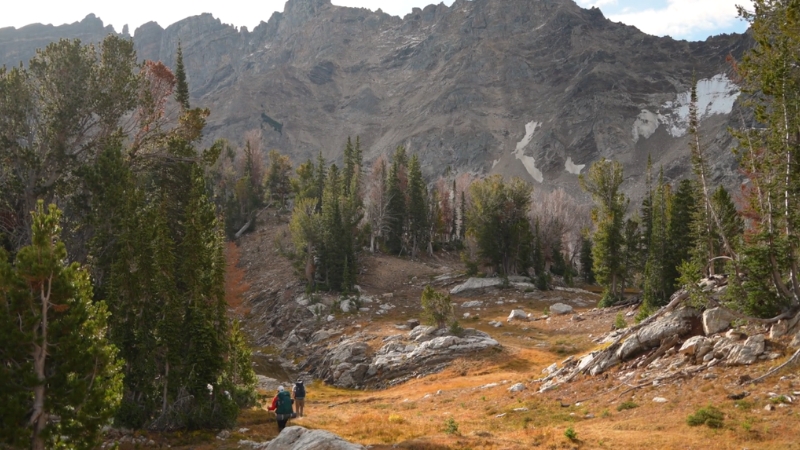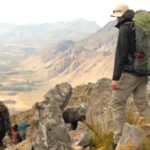A clear purpose helps everyone align expectations. A group may seek adventure, relaxation, team bonding, or skill-building.
A shared aim reduces disagreements on the trail and guides later decisions about pace, campsite style, and daily mileage.
A well-organized outing starts with someone coordinating logistics. A single organizer or two co-leaders can handle communication, reservations, and safety planning.
Some trails cap group size, so an early headcount helps avoid bureaucratic problems. Large groups benefit from structure, so nominating support roles can streamline tasks.
Settling on dates before choosing a destination opens more options, especially for groups needing ample campsites or simple access routes.
Choosing the Right Trail

A successful outing depends on choosing a route that aligns with the group’s goals and physical readiness. Groups should honestly evaluate fitness levels, hiking experience, and health conditions before selecting a destination.
A balanced plan built around moderate expectations keeps spirits high and reduces frustration. Mileage and elevation gain should reflect the pace of the slower members, so no one feels pressured or overwhelmed.
A balanced route also encourages newcomers and seasoned hikers to enjoy the trip at the same time.
Trails without complicated permit systems reduce logistical stress. Moderate grades, reliable water access points, and reasonable distances often suit mixed groups well. Planning becomes easier once the group identifies non-negotiable needs.
Several key factors deserve focused attention, and these can be listed to support decision-making.
Here are the essential considerations for choosing a suitable trail:
- Distance that matches group capacity
- Manageable elevation gain
- Reliable water sources along the route
- Campsite availability for larger parties
- Minimal permit barriers for easier logistics
Route success depends on early preparation and situational awareness. Valid permits, ample parking, and clear trailhead directions help avoid chaotic starts.
Seasonal hazards, wildfire closure zones, road maintenance, and variable weather patterns should be reviewed far in advance. Adjustments become easier when key information is confirmed before departure.
Trip Preparation and Gear Planning
Shared gear reduces redundant weight and eliminates unnecessary clutter in backpacks. Stoves, large shelters, and water filters can be shared among trusted pairs or small teams.
A group checklist helps everyone stay aligned and prevents essential items from being forgotten.
Proper layers, sturdy shelters, and comfortable backpacks protect participants against fatigue, cold, or irritation. Custom print services can also support group organization by providing personalized labels, water bottles, name tags, or waterproof gear stickers.
There are several gear categories worth organizing:
- Group shelters or tarp systems
- Water filtration devices
- Cooking equipment
- Repair kits and spare parts
- Navigation tools
Food Planning

Groups may lean toward shared meals or individual setups. Shared meals often encourage conversation and help build connections early in the trip.
A shared first-night dinner in particular can elevate morale. Dietary restrictions must be reviewed well in advance of departure so that meals suit everyone.
Cooking methods should stay simple to avoid lengthy cleanup sessions and reduce fuel consumption.
You should consider a couple of food preparation strategies:
- Confirm dietary needs during early planning
- Choose meals that require minimal cooking time
- Assign cooking roles if meals are shared
- Pack snacks that are easy to reach during breaks
Water and Resupply
Reliable water sources along the trail shape how much each person must carry. Filtration strategies need to be clear so that each campsite has enough capacity for large parties.
Campsites positioned close to reliable water help reduce labor and maintain smooth routines. Resupply options for longer trips should be discussed early to avoid last-minute changes.
Water considerations worth considering are:
- Identify all water sources on maps
- Assign filtration responsibilities
- Confirm backup sources in case of dry streams
- Plan water carrying capacity for hot conditions
Campsite and Route Planning
View this post on Instagram
Large groups require spacious sites that support multiple shelters and shared cooking areas. A good site should offer flat ground, good drainage, and enough space for tents without everyone crowding each other.
Early reservations in busy regions help avoid last-minute stress.
Design a Realistic Daily Itinerary
Mixed groups benefit most from moderate daily distances. Setting goals around ten miles or less creates time for breaks, conversations, and slow climbs.
Flexibility in daily goals keeps morale high and supports a relaxed atmosphere, especially when delays occur due to fatigue, weather, or route changes.
Bullet points below highlight itinerary planning considerations:
- Account for elevation gain in daily mileage
- Include rest periods at scenic or relaxing spots
- Allow generous time for photo breaks
- Keep evenings open for group activities
Plan for Side Trips
Energetic hikers often enjoy optional short hikes near camp. These additions create variety without pressuring the full group.
Resting members can relax, cook, organize gear, or take photos while others wander nearby. Short excursions work well when planned with clear time boundaries so dinner prep and campsite tasks remain on schedule.
Group Dynamics and On-Trail Management

Pairing newcomers with experienced hikers helps maintain group cohesion and safety. Buddies share gear, support each other during challenging sections, and keep pace together.
This approach reduces the chance of someone becoming isolated during long stretches of trail.
Trail Leadership Structure
Large groups move more smoothly when clear leadership roles exist. Leaders positioned at the front, middle, and back help maintain a steady pace and ensure no one gets lost.
Spacing should allow easy communication without crowding the trail or causing bottlenecks.
Evening Activities
End-of-day gatherings help build community and offer time to unwind. Card games, storytelling, shared snacks, and reviewing the next day’s route encourage connection and reflection.
These moments often stick with participants long after the trip, creating warm memories and strengthening bonds.
Safety, Risk, and Environmental Stewardship

Preparation for accidents is essential. Groups should confirm who carries first aid kits, navigation tools, and emergency beacons.
Everyone should be briefed on evacuation options, communication plans, and any known hazards along the route.
Leave No Trace Principles
Responsible behavior protects natural areas and maintains a respectful relationship with the environment.
Groups should learn proper waste disposal, campsite selection, and trail etiquette. Clean camps and soft footprints preserve the area for visitors later.
The most important Leave No Trace practices are:
- Pack out all trash
- Use designated fire rings when available
- Avoid trampling vegetation
- Store food securely
Weather Contingency Plans
Backup campsites and alternate exits help groups react confidently to storms or sudden changes in conditions.
Flexibility combined with clear communication ensures calm decision-making. A plan that includes multiple safe retreat points supports group safety during unpredictable situations.
Final Thoughts
@thruhikers Backpacking in a group can be a ton of fun. This is our strategy for a successful trip! #backpacking #adventure #sierranevada #friends ♬ Shine – TELL YOUR STORY music by Ikson™
A structured discussion after returning helps everyone share insights. Participants can discuss what worked well and what needs refinement.
Celebrating progress strengthens group bonds. A loosely structured schedule leaves room for delightful surprises and spontaneous fun. A plan should guide, not constrain.
I’m Annabel, and traveling has always been my passion. My idea of fun? A lot of biking and hiking. From the Himalayas to the local hills, if there’s a path (or not), I’ve probably been there or it’s on my list.







